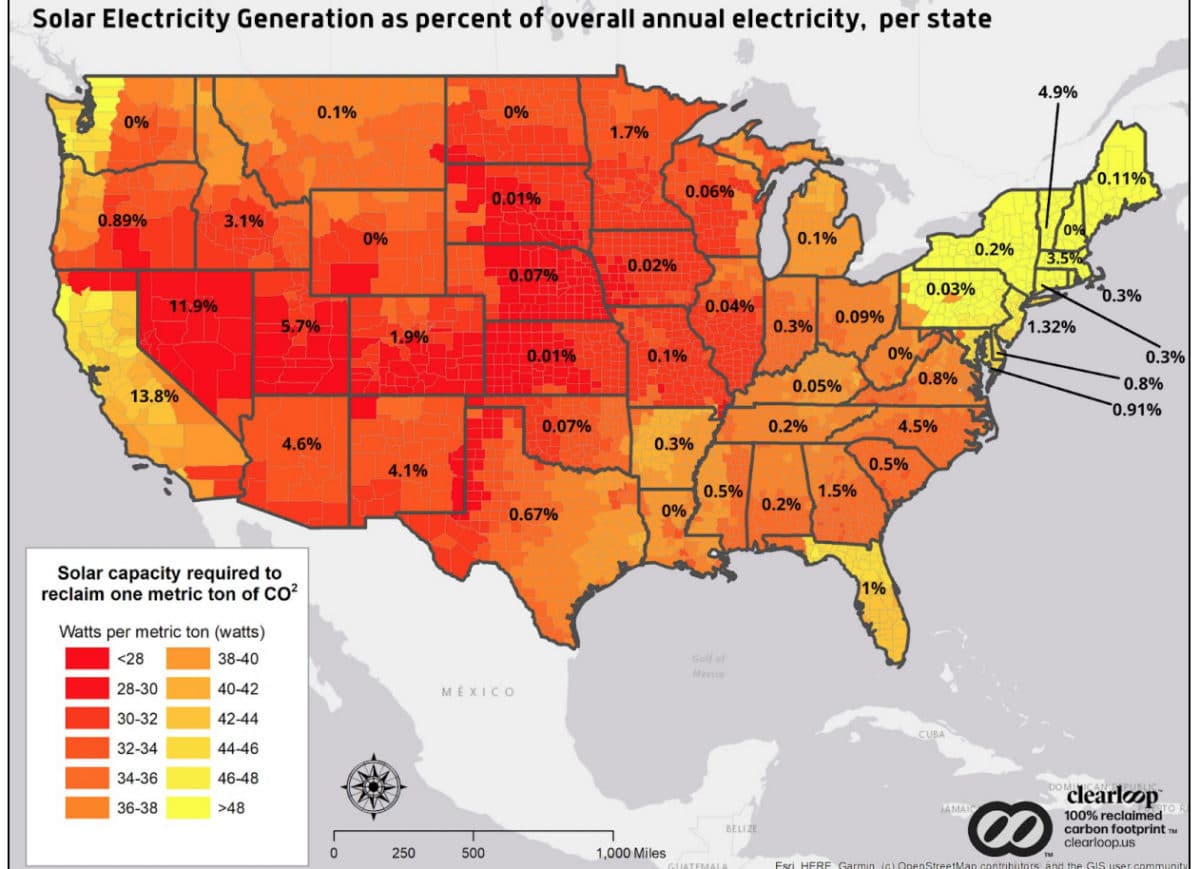While the growth of the solar industry has been profound in the last decade, much of the development has been concentrated in just a few states. Many of the states in the U.S. Sun Belt, a region that sweeps across the south, have some of the lowest penetration of solar energy capacity, despite having substantial solar potential.
In response, Clearloop, Downstream Strategies and WattTime have released research mapping out the best geographic targets to build new solar capacity in the United States and remove the most carbon out of the economy.
The study begins by addressing the issue that 85% of solar development in the United States is concentrated in 10 states. While some of these states have high solar potential and are in the aforementioned Sun Belt — it takes more than potential to spur development.
The authors of the study created a way to quantify the positive impact a new clean energy investment can have on carbon emissions reductions. The term has been dubbed emissionality and the authors use it as a springboard to point to the areas of the country where new development would have the largest impact. The metric calculates the number of watts it takes to avoid 1 metric ton of carbon from being emitted from the current electricity grid — the least number of watts needed, the better.
Where is solar needed?
The top ten states where solar generation would make the biggest difference, along with the current percent of the state’s electricity that comes from solar are:
- Nevada, 11.8%
- New Mexico, 4.1%
- Utah, 5.6%
- Kansas, 0.01%
- Nebraska, 0.07%
- Texas, 0.67%
- Colorado, 1.9%
- South Dakota, 0.01%
- Oklahoma, 0.01%/California, 13.8%
The results are a little bit surprising. One might expect the states with the lowest overall solar penetration to top the list, but that didn’t prove to be the case. Because the metric focuses on watts needed to avoid 1 metric ton of carbon, the list is about more than just solar installed, it also depends on electricity demand and the types of generation currently meeting this demand.
For the states where the percentage of energy generated from solar is less than the roughly 2% national average, federal government action can’t be relied upon to create opportunities, which is why the suggestion is made to shift responsibility onto the private and corporate sectors.
It is the hope of the authors that the study will help to shift the focus of corporate investments in renewable energy to regions of the country with disproportionately carbon-intense electricity production. In this way, not only will these corporations be able to achieve their own renewable generation and emission-reduction goals, but the projects that accomplish these goals will be achieving faster emissions reductions per installed megawatt.
This content is protected by copyright and may not be reused. If you want to cooperate with us and would like to reuse some of our content, please contact: editors@pv-magazine.com.









The “emissionality” metric is missing a dimension. Watts per metric ton of carbon emission reduction needs a time dimension. Perhaps it should be watts per metric ton of carbon emission per year? (I.e., installed watt-years per metric ton of carbon emission reduction.) Or perhaps it is per lifetime of the photovoltaic panel? If you give me one watt of solar for a billion years, I’m sure that will result in more than a reduction of a metric ton of carbon emission, as it’s 8.76 million kWh. But if you give me a MW for one tenth of a second (28 kWh), it doesn’t add up to much.
Yours for fully dimensional reporting,
Guy Spencer